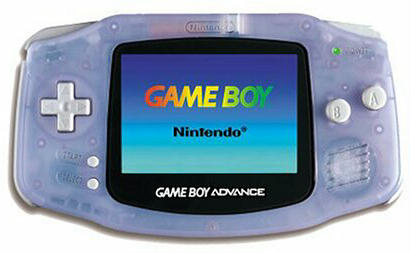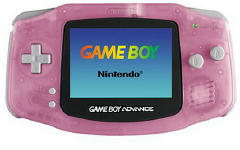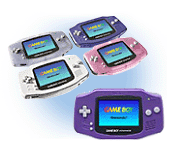
Here's a good trivia question to ask your friends: Besides the Game Boy and Game Boy Color, can you name one other handheld video game system on the market today? You will probably hear mentions of the Atari Lynx and the Sega Game Gear, portable video games that faded into video game obscurity in the early to mid-1990s. But the truth is that Nintendo has, for all intents and purposes, a very firm grip on the portable video game market. Nintendo estimates that it holds a 90 percent share of the portable game market, though some analysts believe that percentage to be even higher.

The Game Boy Advance is a major leap for the Game Boy line. It is the first to have a horizontal alignment, and it is 17 times faster than the Game Boy Color, which was released in 1998.
Since Nintendo launched the Game Boy in 1989, the unit has always had a vertical alignment, meaning that the screen is on the top and the buttons are on the bottom of the unit. The Game Boy Advance is turning the handheld unit on its side -- for the first time, Nintendo is using a horizontal alignment for its handheld game. The screen is in the middle of the device, with the A and B buttons on the right side of its face and the start and select buttons on the left side. This design is similar to Nintendo's competitors and was first used on the now-obsolete Atari Lynx in 1989.


Also new on the Game Boy Advance are Left (L) and Right (R) shoulder buttons, placed on the top of the device. It has a six-button directional pad on the left side of the unit. The device is slightly bulkier than the Game Boy Color. The Game Boy Advance is 5.6 inches (14.2 centimeters) wide, 3.2 inches (8.1 cm) tall and 1.06 inches (2.7 cm) thick. As is Nintendo's usual marketing style, the Game Boy Advance is available in several color patterns, including:

The Game Boy Advance's screen is also slightly larger, at 2.9 inches (7.37 cm), compared to the Game Boy Color's 2.3-inch (5.84-cm) screen. The screen is a reflective, thin film transistor (TFT), color liquid crystal display (LCD). Nintendo has also boosted screen resolution from 160x140 pixels on the Game Boy Color to 240x160 on the Game Boy Advance.
The exterior of the Game Boy Advance is not the only thing that sets it apart from its predecessors. The internal components have been ramped up to support more complex games and allow for more interactivity with other Game Boy users. Let's take a look at the components of the Game Boy Advance: